Justin E. H. Smith in his Substack Newsletter:
 “Ethnoscience” and “Indigenous science”, along with more fine-grained designations like “ethnomathematics”, “ethnoastronomy”, etc., are common terms used to describe both Indigenous systems of knowledge, as well as the scholarly study of these systems. These terms are contested among specialists, for reasons I will not address here. More recently they have also been swallowed up by the voracious beast that is our neverending culture war, and are now hotly contested by people who know nothing about them as well.
“Ethnoscience” and “Indigenous science”, along with more fine-grained designations like “ethnomathematics”, “ethnoastronomy”, etc., are common terms used to describe both Indigenous systems of knowledge, as well as the scholarly study of these systems. These terms are contested among specialists, for reasons I will not address here. More recently they have also been swallowed up by the voracious beast that is our neverending culture war, and are now hotly contested by people who know nothing about them as well.
Thus in his New York Times column of May 13 entitled “This Is How Wokeness Ends”, David Brooks singles out ethnomathematics as one of the “fringe absurdities” produced by the new “soft totalitarian” ideology currently taking America by storm. Two days before that, Brian Leiter declared on his widely read philosophy blog that Indigenous science is “bad science” — this in response to another philosophy blog, Figs in Winter, that had recently deemed Indigenous science “pseudoscience” (Leiter thinks this latter category is unuseful, in view of the well-known demarcation problem in the philosophy of science). Now, Brooks has made a career out of modeling ignorance for intellectually soft and complacent Americans, while Leiter is a representative of an academic discipline that, at least in principle, encourages its members to pursue broad learning and to cultivate an interest in the world around them. So, though perhaps I should be inured to this sort of thing by now, I admit I found it astonishing to come across something so aggressively ignorant and incurious as his dismissal of Indigenous science.
More here.

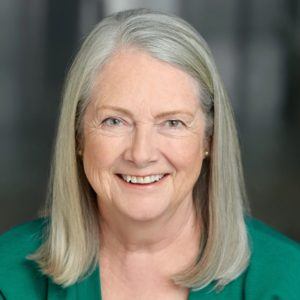 For as much as people talk about food, a good case can be made that we don’t give it the attention or respect it actually deserves. Food is central to human life, and how we go about the process of creating and consuming it — from agriculture to distribution to cooking to dining — touches the most mundane aspects of our daily routines as well as large-scale questions of geopolitics and culture. Rachel Laudan is a historian of science whose masterful book,
For as much as people talk about food, a good case can be made that we don’t give it the attention or respect it actually deserves. Food is central to human life, and how we go about the process of creating and consuming it — from agriculture to distribution to cooking to dining — touches the most mundane aspects of our daily routines as well as large-scale questions of geopolitics and culture. Rachel Laudan is a historian of science whose masterful book, 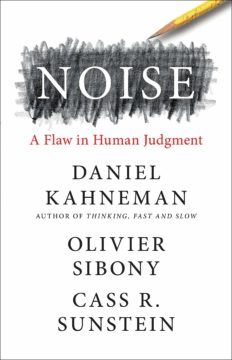 Could you define what you mean by “noise” in the book, in layman’s terms – how does it differ from things like subjectivity or error?
Could you define what you mean by “noise” in the book, in layman’s terms – how does it differ from things like subjectivity or error?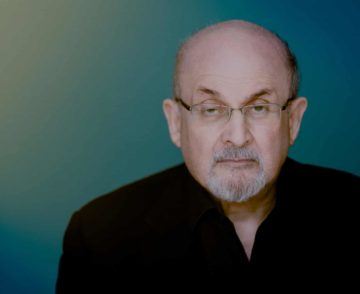 P
P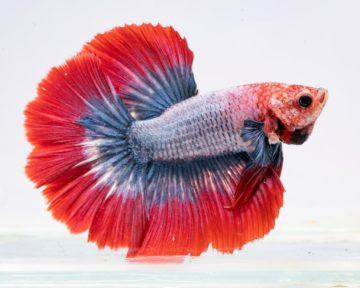 For centuries, humans have been captivated by the beauty of the betta. Their slender bodies and oversized fins, which hang like bolts of silk, come in a variety of vibrant colors seldom seen in nature. However, bettas, also known as the Siamese fighting fish, did not become living works of art on their own. The betta’s elaborate colors and long, flowing fins are the product of a millennium of careful selective breeding. Or as Yi-Kai Tea, a doctoral candidate at the University of Sydney who studies the evolution and speciation of fishes, put it, “quite literally the fish equivalent of dog domestication.”
For centuries, humans have been captivated by the beauty of the betta. Their slender bodies and oversized fins, which hang like bolts of silk, come in a variety of vibrant colors seldom seen in nature. However, bettas, also known as the Siamese fighting fish, did not become living works of art on their own. The betta’s elaborate colors and long, flowing fins are the product of a millennium of careful selective breeding. Or as Yi-Kai Tea, a doctoral candidate at the University of Sydney who studies the evolution and speciation of fishes, put it, “quite literally the fish equivalent of dog domestication.” Along a dried-up channel of the Euphrates river in modern-day Iraq, broken mud bricks poke out of vast, dusty ruins. They are the remains of Uruk, the birthplace of writing that’s better known in popular culture today as the city once ruled by the legendary king Gilgamesh, the hero of an epic about his struggle with life, love and death. Sometimes called the oldest story in the world, the Epic of Gilgamesh continues to resonate with modern audiences more than
Along a dried-up channel of the Euphrates river in modern-day Iraq, broken mud bricks poke out of vast, dusty ruins. They are the remains of Uruk, the birthplace of writing that’s better known in popular culture today as the city once ruled by the legendary king Gilgamesh, the hero of an epic about his struggle with life, love and death. Sometimes called the oldest story in the world, the Epic of Gilgamesh continues to resonate with modern audiences more than  It wasn’t long into the pandemic before Simon Carley realized we had an evidence problem. It was early 2020, and COVID-19 infections were starting to lap at the shores of the United Kingdom, where Carley is an emergency-medicine doctor at hospitals in Manchester. Carley is also a specialist in evidence-based medicine — the transformative idea that physicians should decide how to treat people by referring to rigorous evidence, such as clinical trials.
It wasn’t long into the pandemic before Simon Carley realized we had an evidence problem. It was early 2020, and COVID-19 infections were starting to lap at the shores of the United Kingdom, where Carley is an emergency-medicine doctor at hospitals in Manchester. Carley is also a specialist in evidence-based medicine — the transformative idea that physicians should decide how to treat people by referring to rigorous evidence, such as clinical trials. Joe Biden’s American Families Plan is something of a miracle. It carries out goals that advocates have only dreamed of.
Joe Biden’s American Families Plan is something of a miracle. It carries out goals that advocates have only dreamed of. 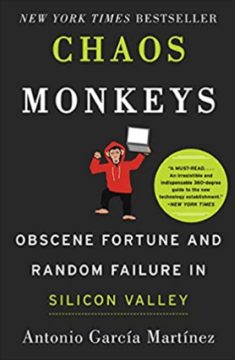 When I read Chaos Monkeys the first time I was annoyed, because this was Antonio’s third career at least — he’d also worked at Goldman, Sachs — and he tossed off a memorable bestseller like it was nothing. Nearly all autobiographies fail because the genre requires total honesty, and not only do few writers have the stomach for turning the razor on themselves, most still have one eye on future job offers or circles of friends, and so keep the bulk of their interesting thoughts sidelined — you’re usually reading a résumé, not a book.
When I read Chaos Monkeys the first time I was annoyed, because this was Antonio’s third career at least — he’d also worked at Goldman, Sachs — and he tossed off a memorable bestseller like it was nothing. Nearly all autobiographies fail because the genre requires total honesty, and not only do few writers have the stomach for turning the razor on themselves, most still have one eye on future job offers or circles of friends, and so keep the bulk of their interesting thoughts sidelined — you’re usually reading a résumé, not a book. unch:
unch: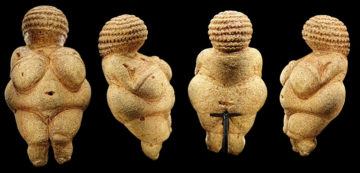 Archaeologists and other scientists are beginning to unravel the story of our most intimate technology: clothing. They’re learning when and why our ancestors first started to wear clothes, and how their adoption was crucial to the evolutionary success of our ancestors when they faced climate change on a massive scale during the Pleistocene ice ages. These investigations have revealed a new twist to the story, assigning a much more prominent role to clothing than previously imagined. After the last ice age, global warming prompted people in many areas to change their clothes, from animal hides to textiles. This change in clothing material, I suspect, could be what triggered one of the greatest changes in the life of humanity. Not food but clothing led to the agricultural revolution.
Archaeologists and other scientists are beginning to unravel the story of our most intimate technology: clothing. They’re learning when and why our ancestors first started to wear clothes, and how their adoption was crucial to the evolutionary success of our ancestors when they faced climate change on a massive scale during the Pleistocene ice ages. These investigations have revealed a new twist to the story, assigning a much more prominent role to clothing than previously imagined. After the last ice age, global warming prompted people in many areas to change their clothes, from animal hides to textiles. This change in clothing material, I suspect, could be what triggered one of the greatest changes in the life of humanity. Not food but clothing led to the agricultural revolution.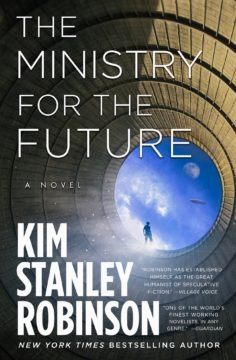
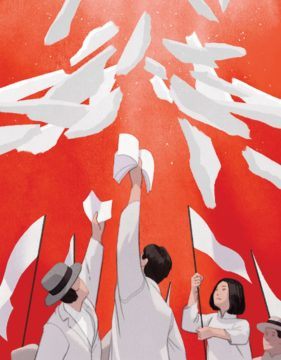 Thomas Meaney in The New Yorker:
Thomas Meaney in The New Yorker: David Masciotra in the Los Angeles Review of Books:
David Masciotra in the Los Angeles Review of Books: Corey Robin in the NYRB:
Corey Robin in the NYRB: